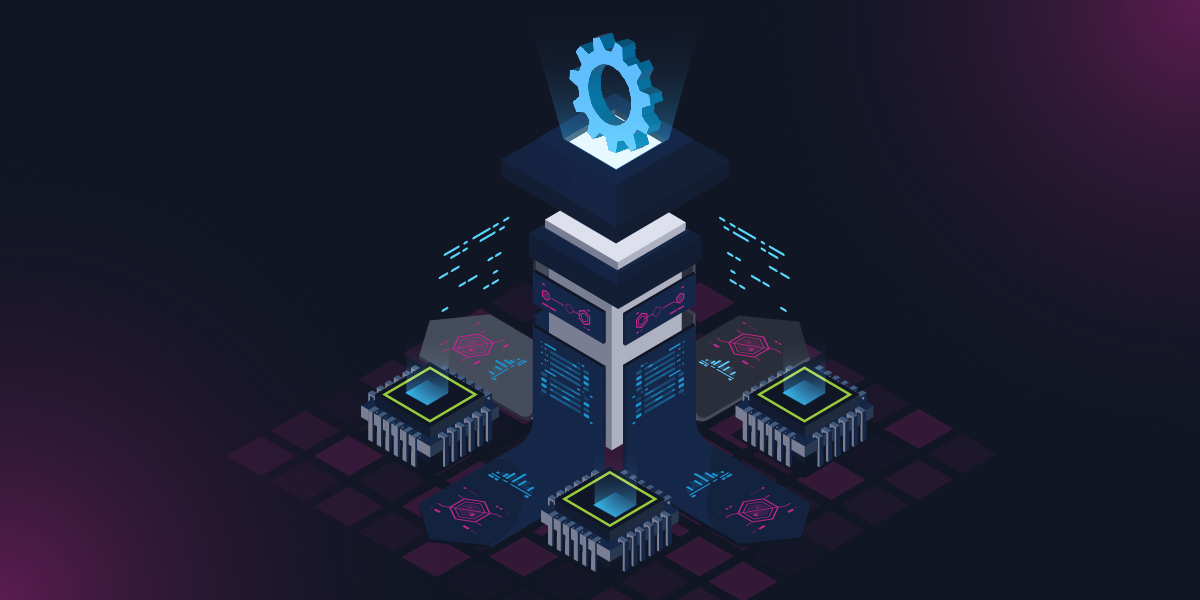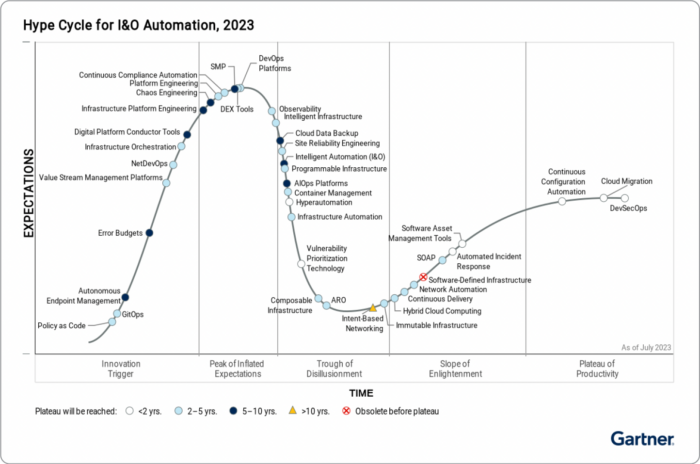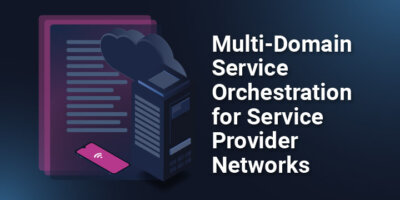According to Gartner’s 2023 Hype Cycle for I&O Automation, automation “is a transformational investment for infrastructure and operations (I&O) leaders” that enables “improved speed to market, increased business agility, mitigation of security and compliance risk, optimization of performance, and minimization of service costs.” For I&O leaders, it’s vital to understand what is driving the rise in adoption of automation technologies so you can build a successful strategy that supports your network and infrastructure goals and increases business velocity.
Why Automation is the Engine that Accelerates Delivery of Value
Simply put, automation serves as the driving force that expedites delivery of value. Infrastructure leaders should consider automation as a fundamental capability to enhance performance and facilitate business velocity and efficiency, especially as they adopt the prevailing concepts of adaptable infrastructure, blended infrastructure, and operational platform strategies.
In the report, Gartner describes the following key factors driving I&O automation adoption:
- Delivering New & Differentiated Services: Fulfilling business requirements involves not only providing new and expanded business capabilities, but also optimizing performance and enhancing efficiency for operating foundational platforms. Organizations are looking to deliver services at the speed and volume that today’s business demands and achieve greater levels of technology and vendor flexibility. This is where automation becomes indispensable.
- Infrastructure Scale: In terms of infrastructure scale, the scope of service topologies has widened, encompassing not just on-premises and cloud deployments, but also extending to the edge, colocation, and the realm of Internet of Things (IoT). Modern infrastructure is programmable, embedding an API-driven approach to infrastructure management into the tools and systems teams use today. This evolution challenges traditional approaches and unlocks the potential for streamlined delivery and effective operational oversight.
- Platform Focus: The realm of software engineering is witnessing the adoption of platform engineering as a centralized method for delivering and supporting critical applications. Platform teams are on the rise among Gartner clients, and usually bring an automation first approach to development and service delivery. The role of a “developer” has evolved to encompass both Infrastructure and Operations (I&O), giving rise to emerging positions like infrastructure platform engineers and reliability engineers. This approach empowers organizations to address security, compliance, and cost requirements related to their infrastructure offerings.
Because of these evolutions in both technology and business, infrastructure automation has become a critical priority. However, taking an effective approach to infrastructure automation requires an understanding of today’s technology landscape so leaders can decide what to adopt and how to move forward.
Unpacking the Automation Hype
The annual Gartner Hype Cycle is a graphical representation of the maturity, adoption, and social application of specific technologies. It is an important tool for IT buyers because it helps them understand the potential of emerging technologies and their impact on the market. It allows them to make informed decisions about which technologies to invest in and when.
This year’s Hype Cycle for I&O Automation is a great tool for leaders looking to deliver efficiencies and innovation, upskill staff and optimize cost and value and boldly states that “by 2025, 70% of organizations will implement structured infrastructure automation to deliver flexibility and efficiency, which is a significant increase from 20% in 2021.”
For each technology included in the hype cycle, the report dives into its role and importance in enabling organizations’ move toward automation success, along with key drivers, challenges, and practical recommendations. Leaders can use the information to make the near- and medium-term technology decisions that will most effectively enable business goals. Let’s take a look at three important innovative technologies for network and infrastructure leaders to assess. We’ll dive into the technologies’ impact on infrastructure automation initiatives, along with Gartner’s insights into their current market penetration and level of projected benefit.
Network Automation
What Is It?
Automating high-volume repetitive networking activities such as provisioning, configuration, operations, maintenance, and validation is driving significant value for many organizations. This helps to improve agility and efficiency while lowering costs and reducing human error, improving business outcomes. That’s why, according to Gartner’s report, 25% of enterprises will automate more than half of their network activities by 2025, an increase from fewer than 8% of enterprises in early 2022. And a projected 70% of organizations are slated to implement infrastructure automation by 2025, up from 20% in mid-2021. For organizations looking to modernize and transform their approach to managing network infrastructure, network automation is key.
Why I&O Leaders Must Assess & Adopt Network Automation
As Gartner’s report states, “network automation adoption in enterprise lags behind that of server automation.” While other areas of IT have evolved and moved ahead, the network is still considered a bottleneck to innovation for many organizations due to do many factors such as cultural aversion to adopting automation, limited skill sets, and complex and heterogenous environments. Network leaders should look to adopt automation tooling that can be easily used and adopted, limiting the need to re-skill or re-train, out-of-the-box support for use cases across their distributed infrastructure and avoid pit falls with point solutions that lack flexibility and integration across the distributed, hybrid environments that organizations manage today.
Get the guide to evaluating network automation solutions
NetDevOps
What Is It?
NetDevOps is an approach to network automation that involves applying DevOps and CI/CD practices to networking activities to build a unified set of tools and methods across which both cloud and network teams can manage infrastructure deployments and changes. By 2025, 70% of organizations will complement continuous delivery of applications with continuous infrastructure automation to improve business agility, which is a significant increase from fewer than 20% in 2021.
Why I&O Leaders Must Assess & Adopt NetDevOps
Despite its recent entrance into the market, NetDevOps is already recognized as a ‘transformational’ benefit to teams and organizations that adopt it. With a growing need to automate comprehensively across distributed infrastructure, Gartner states that “traditional approaches to network provisioning are not sufficiently agile or reliable.” NetDevOps practices can help automate testing to reduce errors and downtime and improve an organization’s ability to adopt and integrate new infrastructure technologies. Network leaders should look to introduce NetDevOps concepts to both NetOps and DevOps teams and should explore platforms that enable both teams to collaborate and contribute to end-to-end automation.
Learn more about NetDevOps in the Gartner I&O Hype Cycle
Infrastructure Orchestration
What Is It?
With the adoption of infrastructure orchestration technology, platform and IT teams can orchestrate services end-to-end across on-premises, cloud, and edge deployments, enabling zero-touch deployments. In addition, comprehensive orchestration capabilities allow teams to embed critical security and compliance requirements into automated change workflows for faster delivery at reduced risk. Orchestrating services in a centralized way across a distributed infrastructure is critical to achieving true zero-touch, to integrating with external systems, and to publishing automations to self-service portals and other platforms like ServiceNow.
Why I&O Leaders Must Assess & Adopt Infrastructure Orchestration
Infrastructure orchestration is an emerging set of practices and technologies that requires an organization to be at a certain level of automation and infrastructure maturity, so adoption can be challenging. However, for those early adopters who have moved forward in this area, infrastructure teams are leveraging infrastructure orchestration to improve operational efficiency. They are able to “reduce manual efforts to deliver infrastructure, embed security and compliance requirements into the delivered services, and offer cost optimization opportunities.” That’s why it’s critical for infrastructure leaders to build a strategy for adoption that takes technical, organizational, and cultural roadblocks into consideration. When adoption is successful, infrastructure operations can be transformed to have “an automation-first focus and scale to meet increased business demands.”
See how you can evolve your automation maturity to include orchestration
Itential Named a Representative Vendor Across 3 Categories in the I&O Automation Landscape
Itential is uniquely positioned to enable automation and orchestration across every aspect of our customers’ infrastructure, stitching together network and non-network tasks to build out end-to-end workflows. Our vendor-agnostic, API-driven approach to integration allows Itential to act as an orchestrator — a centralized platform from which services can be built, managed, monitored, and shared. That’s why we featured in three different areas across the I&O automation report. In fact, Itential was also named in five other Hype Cycles for related technology areas including enterprise networking and data center technology. You can learn more about that here.
When it comes to network and infrastructure automation, different organizations are at different levels of maturity. Itential’s products are designed to meet customers where they are, providing capabilities to help transform and modernize network and infrastructure operations at any point along the automation journey. From scripting, to process orchestration, all the way to a fully integrated self-serve network and infrastructure automation environment, Itential can give leaders and teams the foundation for future-proof automation success.
If you take one thing away from Gartner’s 2023 Hype Cycle for I&O Automation, it should be the value and potential benefit of automation. The report dives into dozens of technologies to support infrastructure automation that are emerging or maturing in the industry today, and leaders who take this information to build an organization-wide automation strategy will see great success. Automation is the best way for organizations to not only keep up with infrastructure complexity and scale, but to successfully bring their entire infrastructure technology ecosystem together — that’s how you ensure your organization’s technology is supporting and driving your business goals instead of constraining them.
To see all of Gartner’s analysis and learn about each technology area in more depth, dive into the full Gartner® 2023 Hype Cycle Report for I&O Automation for free here.






